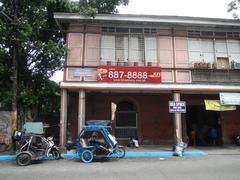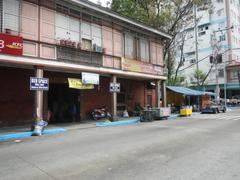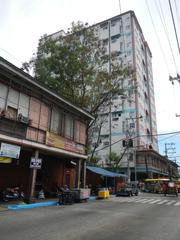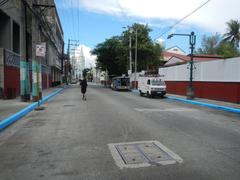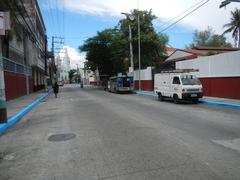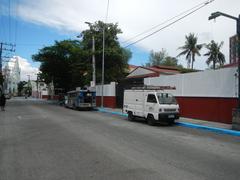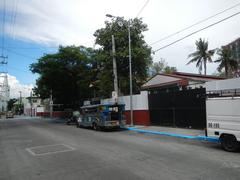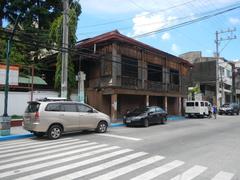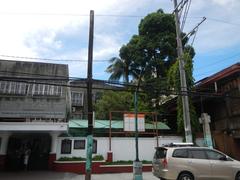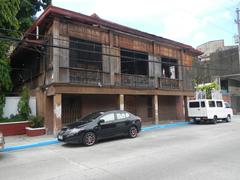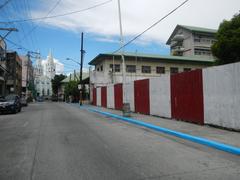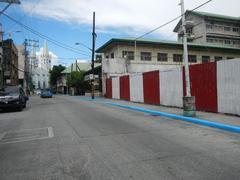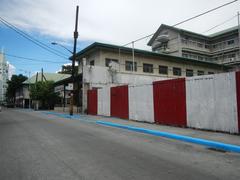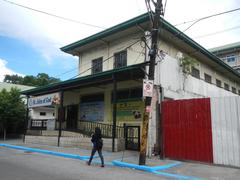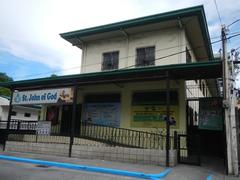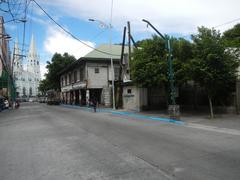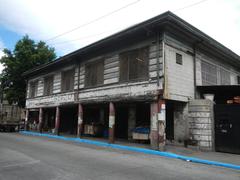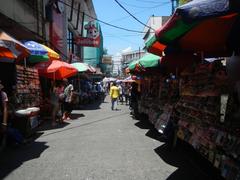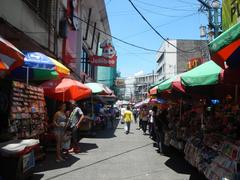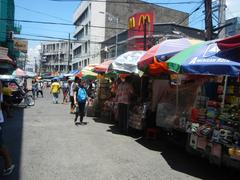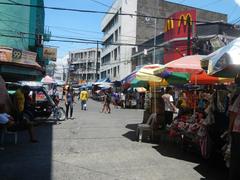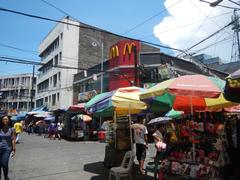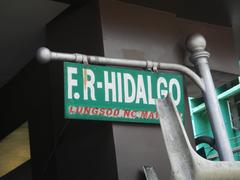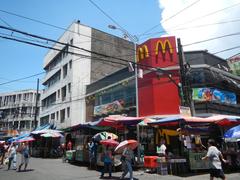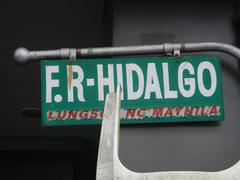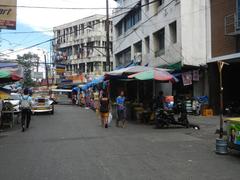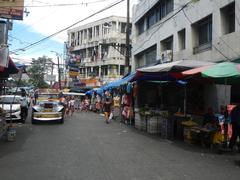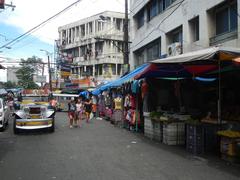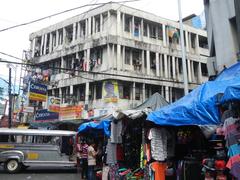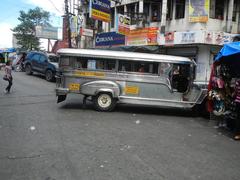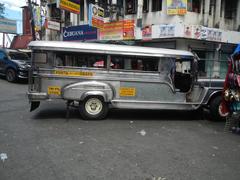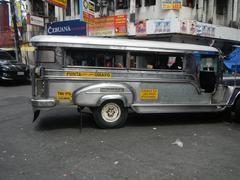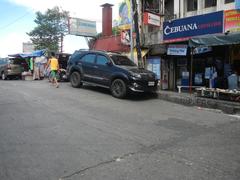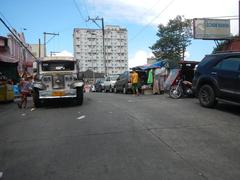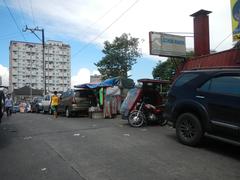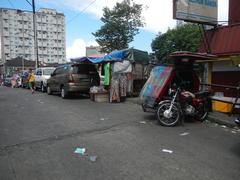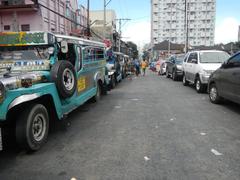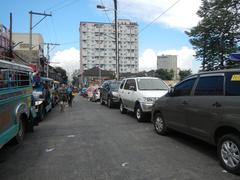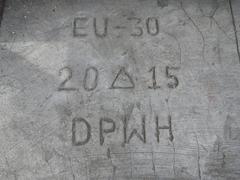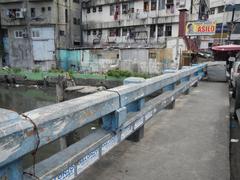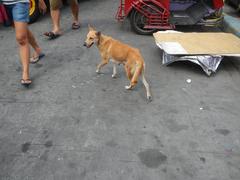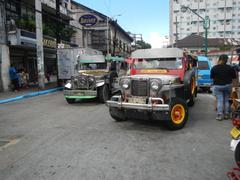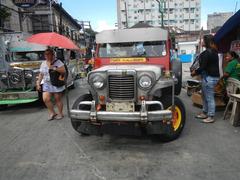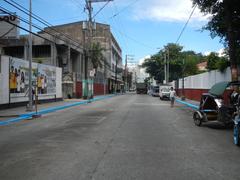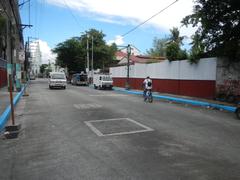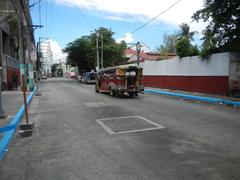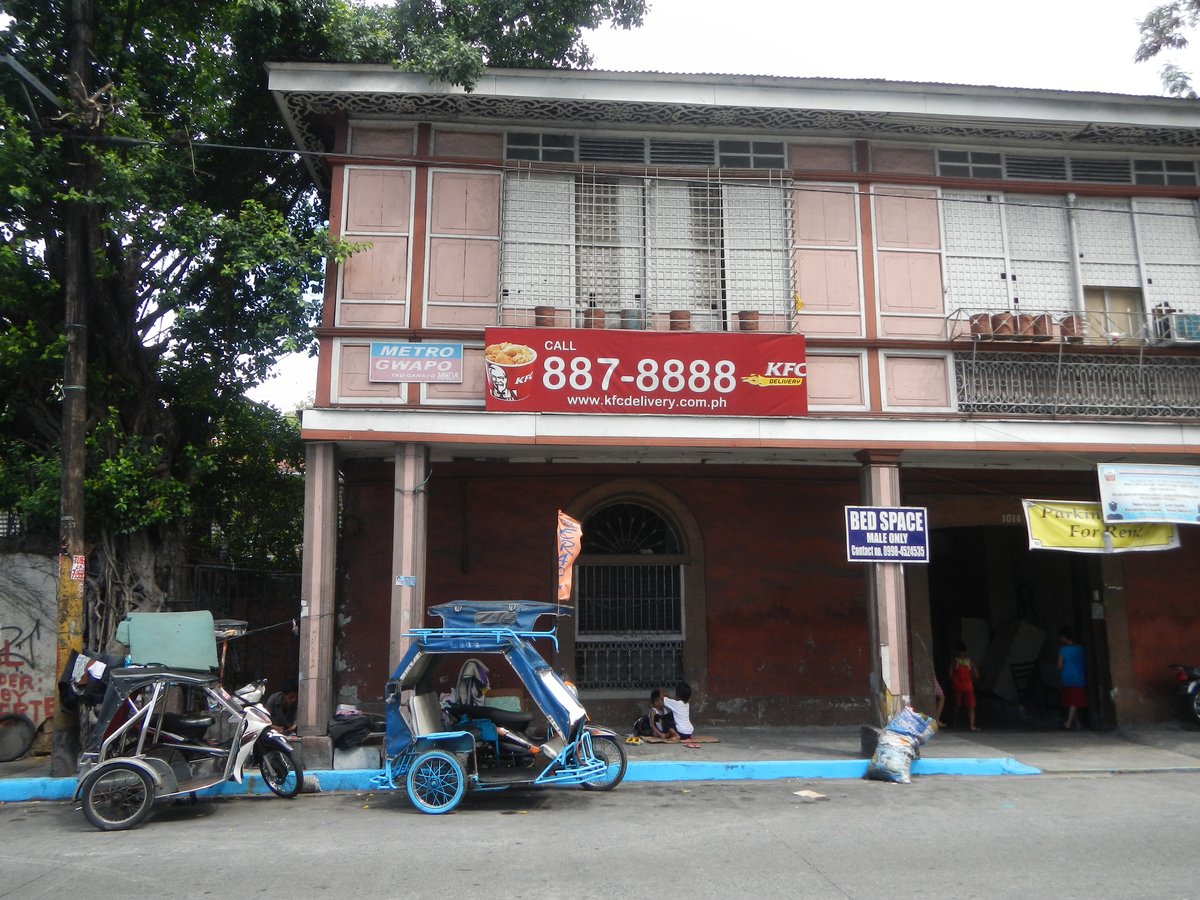
Hidalgo Street, Manila: Complete Visiting Guide, Historical Sites & Travel Tips
Date: 15/06/2025
Introduction
Hidalgo Street, nestled in the bustling heart of Quiapo, Manila, is a living chronicle of the Philippines’ colonial past and its vibrant urban culture. Once lauded as “the most beautiful street in Manila,” Hidalgo Street is now a captivating blend of heritage architecture, dynamic commerce, and community life. From its grand Spanish-era mansions and iconic churches to its present-day status as the country’s “Photographer’s Haven,” it offers a multifaceted experience for history enthusiasts, culture seekers, and everyday explorers (FilipiKnow; journal.com.ph). This detailed guide provides everything you need to know about visiting Hidalgo Street, including practical tips, historical context, visiting hours, ticketing, accessibility, and highlights of nearby attractions.
Quick Reference: Contents
- Historical Background
- Origins and Colonial Development
- Architectural Heritage and Transformation
- Notable Events and Personalities
- Preservation Efforts and Contemporary Challenges
- Visiting Hidalgo Street: Practical Info
- Visiting Hours & Access
- Tickets and Guided Tours
- How to Get There
- Safety and Travel Tips
- Key Heritage Sites & Attractions
- Bahay na Bato Houses
- Zamora-Paterno Heritage House
- Bahay Nakpil-Bautista
- Quiapo Church
- San Sebastian Church
- Golden Mosque
- Camera Row & Markets
- Frequently Asked Questions (FAQs)
- Summary Table of Historical Milestones
- Conclusion & Call to Action
- Sources and Further Reading
Historical Background
Origins and Colonial Development
Hidalgo Street traces its roots to the Spanish colonial era, originally known as Calle de San Sebastian and Calle Crespo (Wikipedia). The area developed as a commercial and residential center from the 17th century, with Quiapo itself named after the local “kiapo” water plant (Out of Town Blog). By the 1800s, Hidalgo Street gained a reputation for its stately homes and became Manila’s premiere address for the elite (FilipiKnow).
Architectural Heritage and Transformation
The street is famous for its bahay na bato—two-story Filipino-Spanish houses featuring stone lower levels and wooden upper floors, adorned with capiz windows and ornate ironwork (Spot.ph). Notable examples include the Zamora-Paterno Heritage House (Spot.ph), linked to inventor Manuel Zamora and protected under the National Cultural Heritage Act (Philstar). The Bahay Nakpil-Bautista, another landmark, was home to revolutionary figures and now serves as a museum (Trek.zone).
Hidalgo Street’s transformation in the 20th century saw many original mansions replaced or repurposed due to urbanization and war (Medium). The street later evolved into Manila’s photography hub, famously known as “Camera Row,” attracting both hobbyists and professionals (Dexter’s Digest).
Notable Events and Personalities
Renamed after Félix Resurrección Hidalgo, a renowned Filipino painter and reformist, the street honors Manila’s heritage of artistic and intellectual achievement (Wikipedia). Annual religious events, such as the Feast of the Black Nazarene, draw millions to the area, transforming Hidalgo Street into a vibrant artery of faith (Out of Town Blog; The Summit Express). The street’s proximity to Quiapo Church and San Sebastian Church cements its place in Manila’s religious and social fabric (Spot.ph).
Preservation Efforts and Contemporary Challenges
Modern Hidalgo Street faces challenges from neglect, congestion, and development pressure (FilipiKnow). However, heritage advocates and local stakeholders are pushing for preservation through adaptive reuse, community engagement, and proposed heritage zone legislation (Senor Enrique Blog; Philstar). Recent projects, like the restoration of the Zamora House, highlight the potential for harmonizing old and new Manila (Academia.edu).
Visiting Hidalgo Street: Practical Info
Visiting Hours & Access
- Street Access: Hidalgo Street is a public thoroughfare, open 24/7. For safety and the best experience, visit between 8:00 AM and 6:00 PM.
- Shops & Establishments: Camera shops and markets typically operate from 9:00 AM to 7:00 PM.
- Heritage Houses & Museums: Most are open Tuesday–Sunday, 9:00 AM–5:00 PM (e.g., Bahay Nakpil-Bautista).
- Religious Sites: Quiapo Church: 5:00 AM–9:00 PM daily; San Sebastian Church: 8:00 AM–6:00 PM.
Tickets and Guided Tours
- Street & Churches: Free entry; donations welcome at religious sites.
- Museums/Heritage Houses: Small admission fees (PHP 50–200).
- Guided Tours: Community and operator-led tours (e.g., Bukas Quiapo Tours) range from PHP 500–1,000, often including food tastings and historical walks.
How to Get There
- By LRT: Alight at Carriedo Station (LRT Line 1), a 10–15 minute walk to Hidalgo Street.
- By Jeepney/Bus: Take routes passing through Quiapo or Recto Avenue.
- By Taxi/Ride-Hailing: Input “Hidalgo Street, Quiapo, Manila.” Street parking is limited.
Accessibility & Safety
- The area is pedestrian-friendly but busy. Expect crowds during religious events.
- Some heritage buildings may not be wheelchair accessible.
- Stay vigilant in crowded areas; secure valuables.
- Dress modestly when visiting religious/cultural sites.
Travel Tips
- Visit early for fewer crowds and better photography lighting.
- Cash is preferred at most stalls and small shops.
- Ask permission before photographing vendors, faith healers, or inside heritage homes.
Key Heritage Sites & Nearby Attractions
Heritage Houses
- Zamora-Paterno Heritage House: Notable for its courtyard and adaptive reuse efforts (Spot.ph).
- Bahay Nakpil-Bautista: Museum dedicated to Philippine revolutionaries, with well-preserved period architecture (Trek.zone).
Religious & Cultural Landmarks
- Minor Basilica of the Black Nazarene (Quiapo Church): Baroque church famed for the annual Traslación procession.
- San Sebastian Church: The only all-steel basilica in Asia, exhibiting Neo-Gothic design (Tripjive).
- Masjid Al-Dahab (Golden Mosque): Center of Muslim community life in Manila (Trek.zone).
Commercial & Culinary Experiences
- Camera Row: Manila’s go-to for cameras, gear, and repairs (Dexter’s Digest).
- Quiapo Market: Bustling bazaar for electronics, clothing, religious items, and street food.
- Street Food: Sample local favorites like fish balls, kwek-kwek, and taho (Nipino).
Festivals & Community Life
- Traslación (Feast of the Black Nazarene): Annual procession transforms Hidalgo Street into a center of devotion and celebration (The Summit Express; Manila Standard).
FAQs: Hidalgo Street
Q: What are the visiting hours for Hidalgo Street?
A: Public access is open 24/7; best to visit between 8:00 AM and 6:00 PM. Shops and museums typically operate from 9:00 AM–5:00/7:00 PM.
Q: Is there an entrance fee?
A: The street and churches are free to enter. Museums and heritage houses charge small admission fees.
Q: How do I get there?
A: Take LRT Line 1 to Carriedo Station, or use jeepney, bus, taxi, or ride-hailing apps.
Q: Are guided tours available?
A: Yes, community and operator-led tours are available, often including historical and culinary experiences.
Q: Is the area safe for tourists?
A: Generally safe by day. Stay vigilant in crowds, especially during festivals, and avoid visiting alone after dark.
Q: What should I wear?
A: Modest, comfortable clothing is recommended, especially when visiting religious sites or during festivals.
Q: Are there accessible options for people with disabilities?
A: Public areas are accessible, but heritage homes may have limited wheelchair access.
Summary Table: Key Historical Milestones
| Period | Event/Development |
|---|---|
| Early 19th century | Calle de San Sebastian/Calle Crespo established; elite residences built |
| Late 19th century | Renamed after Félix Resurrección Hidalgo |
| 1891 | Completion of San Sebastian Church |
| Early 20th century | Decline of mansions; increased commercialization |
| Post-WWII | Transformation into camera and photography hub |
| Present day | Heritage preservation and adaptive reuse efforts ongoing |
Conclusion & Call to Action
Hidalgo Street is a living testament to Manila’s evolving identity, bridging colonial grandeur, urban dynamism, and enduring community spirit. Its heritage houses, iconic churches, bustling markets, and cultural festivals make it a must-visit for anyone seeking to understand the layers of Manila’s history and culture. Despite modern challenges, ongoing preservation and adaptive reuse efforts continue to protect its unique character.
Whether you’re exploring on your own, joining a guided tour, or immersing yourself in local festivities, Hidalgo Street offers enriching experiences for every visitor. Support local businesses, respect cultural traditions, and help preserve this historic artery for future generations.
For more detailed tips, insider guides, and immersive audio tours, download the Audiala app and follow us on social media. Plan your journey and experience the living heartbeat of Manila at Hidalgo Street.
Suggested Visuals
- Zamora-Paterno Heritage House façade on Hidalgo Street, Manila
- Interior of Bahay Nakpil-Bautista, Manila heritage house museum
- Baroque façade of Quiapo Church, Manila
- Camera Row shops along Hidalgo Street, Manila
- Black Nazarene procession on Hidalgo Street
Sources and Further Reading
- Wikipedia: Hidalgo Street
- Quiapo Travel Guide: Things to Do
- Manila History and Trivia
- Hidalgo Street Revisited
- 10 Historic Streets in Manila Every Pinoy Should Know About
- Narratives and Renamed Streets
- Hidalgo Street: The Photography Gear Haven in Manila
- Rep. Chua Proposes Declaring Quiapo a National Heritage Zone
- What to Experience: Manila Tourist Spots
- Things to Do in Manila
- Reviving Calle Hidalgo Through Cultural Preservation
- Historic Zamora-Paterno Heritage House
- What We Know So Far: Movements of Manila’s Heritage Structures
- Experience the Heart of Manila with Quiapo Cultural Exploration
- Quiapo: The Devotees Domain
- Traslacion 2025 Route, Schedule of Activities, Reminders & Updates
- Over 240,000 Devotees Kick Off 2025 Traslacion
